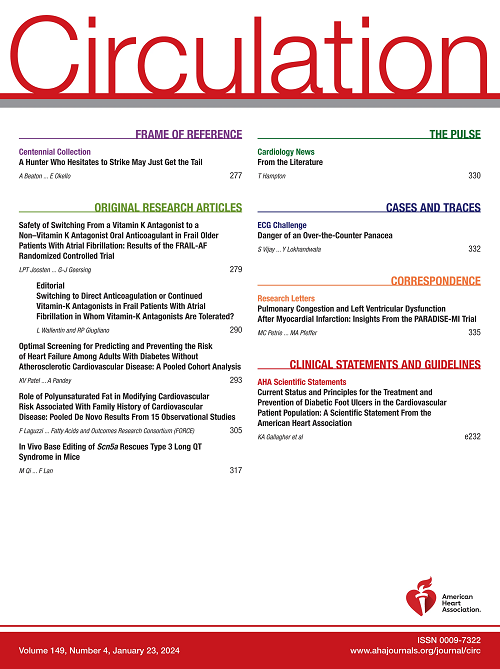利用多模态诊断系统表征猪-人异种心脏移植的免疫反应。
IF 38.6
1区 医学
Q1 CARDIAC & CARDIOVASCULAR SYSTEMS
引用次数: 0
摘要
猪基因组编辑已经彻底改变了异种移植,最近首次实现了猪到人的心脏异种移植。然而,异种心脏移植的异种免疫反应在很大程度上仍未被探索。这项研究旨在精确表征两种心脏异种移植物的异种免疫反应和损伤,将10基因编辑的猪移植到脑死亡的人类受体中。方法采用多模态表型分析方法,结合形态学评估、免疫表型分析、超微结构评估、多重免疫荧光染色自动定量和基因表达谱分析,对再灌注后66小时的异种移植物活检进行分析。以移植前的异种移植物和有无缺血再灌注损伤和脑死亡的野生型猪心脏为对照。结果两种异种移植物均表现出内皮活化和轻度微血管炎症,无毛细血管C4d沉积。免疫浸润主要由CD15+和CD68+先天免疫细胞组成。超微结构检查显示内皮细胞肿胀,偶见血管内白细胞。基于深度学习的自动多重免疫荧光分析证实微血管炎症主要与CD15+和CD68+先天免疫细胞相关。两种异种移植物都显示出与单核细胞/巨噬细胞活化、中性粒细胞活化、干扰素- γ反应、自然杀伤细胞负荷、内皮细胞活化、细胞凋亡和损伤修复相关的基因和途径的表达增加。这种表型在所有对照猪心脏中均不存在,与缺血再灌注损伤和脑死亡无关。结论猪-人异种心脏移植的多模态表型显示异种免疫反应的早期迹象,其特征是轻微的先天性微血管炎症、内皮细胞活化和抗体介导的排斥反应的分子特征。开发这种精确诊断系统可以提高移植物的临床监测水平。本文章由计算机程序翻译,如有差异,请以英文原文为准。
Characterizing the Immune Response in Pig-to-human Heart Xenografts Using a Multimodal Diagnostic System.
BACKGROUND
Porcine genome editing has revolutionized xenotransplantation, recently enabling the first pig-to-human heart xenotransplants. However, the xeno-immune response in heart xenografts remains largely unexplored. This study aimed to precisely characterize the xeno-immune response and injury in two heart xenografts, transplanted from 10-gene-edited pigs into brain-dead human recipients.
METHODS
We analyzed xenograft biopsies at 66-hour post-reperfusion using a multimodal phenotyping approach combining: morphological evaluation, immunophenotyping, ultrastructural assessment, automated quantification of multiplex immunofluorescence staining and gene expression profiling. Xenografts before implantation and wild-type pig hearts with and without ischemia reperfusion injury and brain death were used as controls.
RESULTS
Both xenografts showed evidence of endothelial activation and mild microvascular inflammation without capillary C4d deposition. Immune infiltrates were mainly composed of CD15+ and CD68+ innate immune cells. Ultrastructural assessment showed endothelial swelling with occasional intravascular leucocytes. Deep-learning based automated multiplex immunofluorescence analysis confirmed that microvascular inflammation was primarily associated with CD15+ and CD68+ innate immune cells. Both xenografts showed increased expression of genes and pathways associated with monocyte/macrophage activation, neutrophil activation, interferon-gamma response, natural killer cell burden, endothelial activation, apoptosis and injury repair. This phenotype was absent in all control pig hearts, independently from ischemia reperfusion injury and brain death.
CONCLUSIONS
Multimodal phenotyping of pig-to-human heart xenografts revealed early signs of xeno-immune response, characterized by mild innate microvascular inflammation, endothelial activation, and molecular signature characteristic of antibody-mediated rejection. Developing such precision diagnostic system could improve graft monitoring in future clinical settings.
求助全文
通过发布文献求助,成功后即可免费获取论文全文。
去求助
来源期刊

Circulation
医学-外周血管病
CiteScore
45.70
自引率
2.10%
发文量
1473
审稿时长
2 months
期刊介绍:
Circulation is a platform that publishes a diverse range of content related to cardiovascular health and disease. This includes original research manuscripts, review articles, and other contributions spanning observational studies, clinical trials, epidemiology, health services, outcomes studies, and advancements in basic and translational research. The journal serves as a vital resource for professionals and researchers in the field of cardiovascular health, providing a comprehensive platform for disseminating knowledge and fostering advancements in the understanding and management of cardiovascular issues.
 求助内容:
求助内容: 应助结果提醒方式:
应助结果提醒方式:


